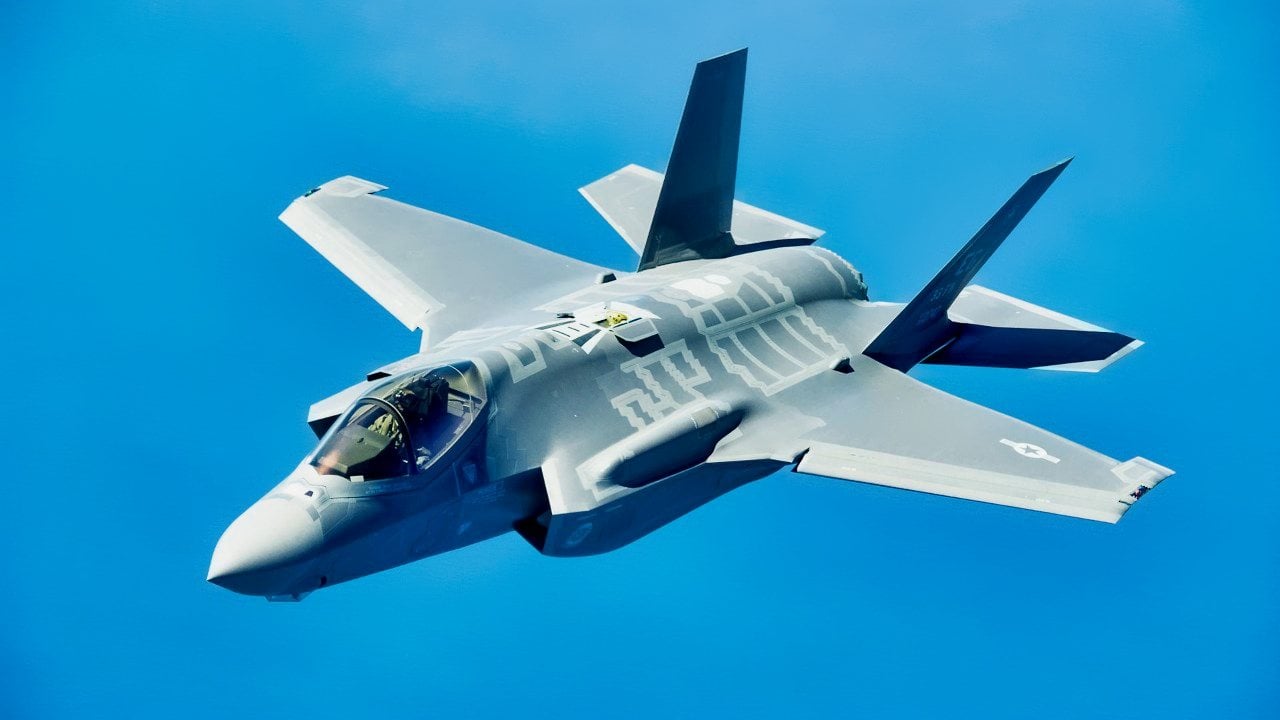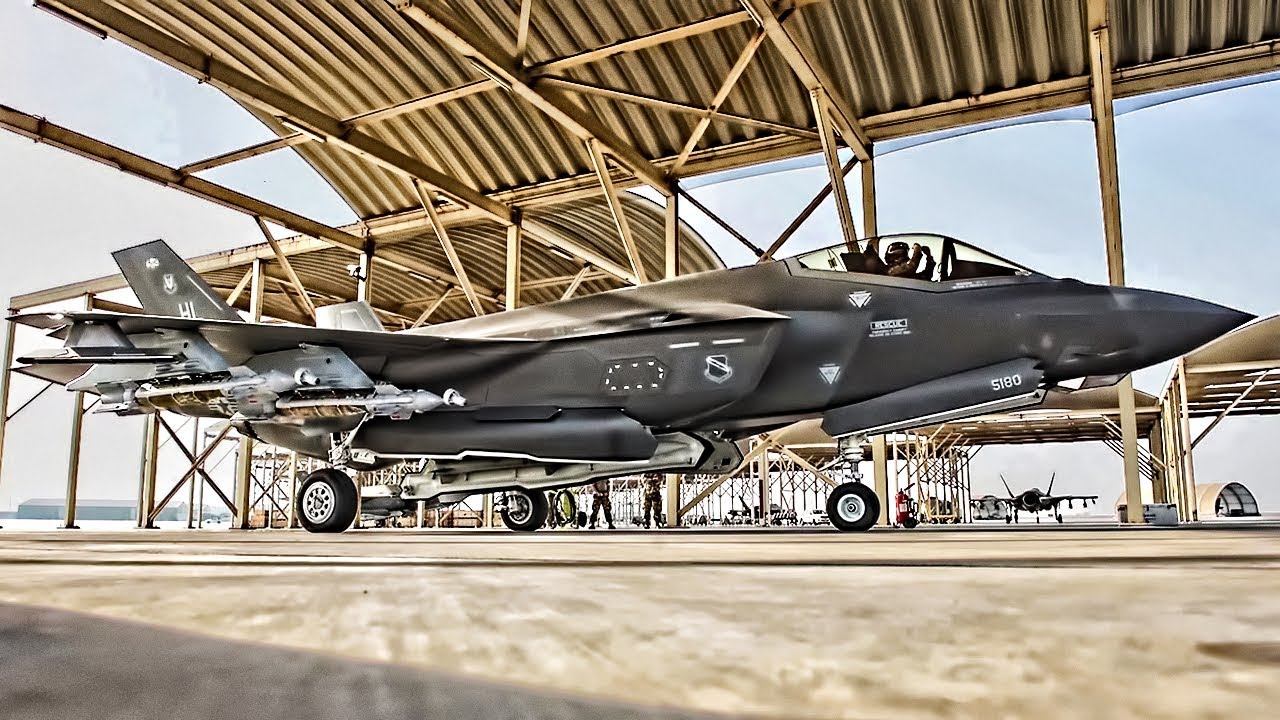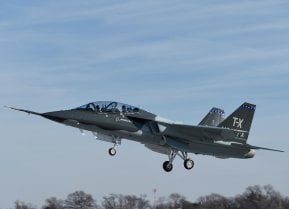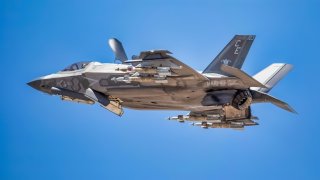F-35 Beast Mode: How America’s Stealth Jet Becomes a Bomb Truck
The F-35, known for its stealth and precision, can switch to "Beast Mode," vastly increasing its firepower. In stealth mode, the F-35 carries just 5,700 pounds of internal weapons to minimize its radar cross-section.
Summary and What You Need to Know: The F-35, known for its stealth and precision, can switch to "Beast Mode," vastly increasing its firepower. In stealth mode, the F-35 carries just 5,700 pounds of internal weapons to minimize its radar cross-section.

-However, once air superiority is secured, the jet can deploy external hardpoints, boosting its payload to 22,000 pounds.
-This transformation allows the F-35 to carry up to 14 AMRAAMs and six 2,000-pound JDAM bombs, though at the cost of halving its operational range.
-Beast Mode ensures the F-35’s versatility, allowing it to dominate in both initial stealth operations and prolonged, high-intensity conflicts.
F-35 Beast Mode: Transforming Stealth into Sheer Firepower
The F-35 is typically perceived as a graceful and refined fighter, created with advanced features emphasizing concealment and surgical precision. The common perception is grounded in truth; indeed, the F-35 is a fifth-generation stealth fighter, built to house software that enhances network connectivity and data sharing. But the common perception discredits the F-35 for its versatility – and for its ability to “roll up its sleeves.”
Remember, the F-35 is a multi-role fighter, and when prompted, can be reconfigured as a straightforward, knuckle-dragging, bomb-carrier. The reconfiguration is known as “Beast Mode.”
All Out Flight
Designed with stealth technology, the F-35 is adept at entering contested airspace, avoiding detection, and engaging enemy targets – all before air superiority is established. Really, the F-35 is designed expressly to initially establish air superiority. And because the F-35 is designed to be stealthy, concessions were made with respect to weapons payloads. To enhance its stealth characteristics, the F-35 uses an internal weapons bay, rather than external hard points that drastically increase an aircraft’s radar cross-section. While the internal weapons bay makes for a stealthier airframe, the storage space, inside the fuselage, is limited.

F-35 Stealth or Carry: Enter Beast Mode
In stealth mode, when the F-35 carries weapons internally, the jet can handle just 5,700 pounds of ordinance. That breaks down to either four AIM 120 AMRAAM missiles (for air-to-air missions), or alternatively – for hybrid missions – two AMRAAMs paired with two GBU-31 JDAM bombs. That’s not very much firepower – but the concession is worthwhile to gain stealth benefits.
However, once air superiority is established, once an enemy loses its anti-air systems such as air defense missiles and guns, sensors, interceptor aircraft, stealth mode becomes less relevant. And when stealth loses its relevance, the F-35 can enter “Beast Mode,” and use its external hard points to maximize its firepower.
In Beast Mode, the F-35 can handle four times more ordinance than when operating in stealth mode. Using the external hardpoints plus the internal weapons bay, the F-35 can carry 22,000 pounds of ordinance. That breaks down to 14 AMRAAMs and two AIM-3x Sidewinder missiles for air-to-air missiles.
Or, for hybrid missions, the jet can be outfitted with two AMRAAMs, two Sidewinders, and six JDAM 2,000-pound bombs. Indeed, the boost in firepower is significant – although, in Beast Mode, the F-35’s operational range is cut in half – to just 1,400 kilometers.
Something may feel counterintuitive about using the F-35, a fifth-generation jet/supercomputer, as a simple bomb truck – a role that clunkier, Cold War-era aircraft, like the F-16 or B-52, are entirely equipped to handle. Yet, when you consider that the F-35 program cost taxpayers 1.7 trillion dollars, the notion of using the jet just to secure air superiority in the opening salvo of a conflict becomes offensive.

If you’re going to spend that type of money on an airframe, you’d better milk it for all it’s worth – a sentiment that the Beast Mode configuration embodies. And for the U.S., which has a tendency to invade countries with rudimentary air defense systems – and then stick around for multi-decade occupations – the F-35 needs to be able to do more than just sneak around and wipe out air defense systems in the first few days of conflict.
About the Author
Harrison Kass is a prolific defense writer with over 1,000 articles published. An attorney, pilot, guitarist, and minor pro hockey player, he joined the US Air Force as a Pilot Trainee but was medically discharged. Harrison has degrees from Lake Forest College, the University of Oregon, and New York University. He lives in Oregon and listens to Dokken. Follow him on Twitter @harrison_kass.
All images are Creative Commons.


